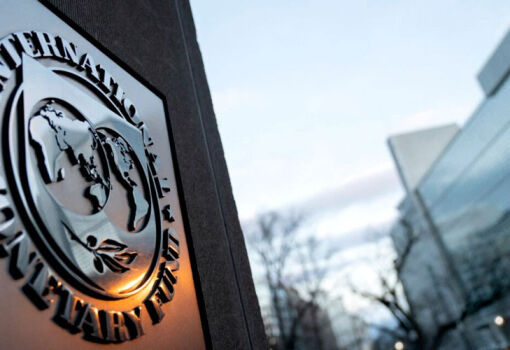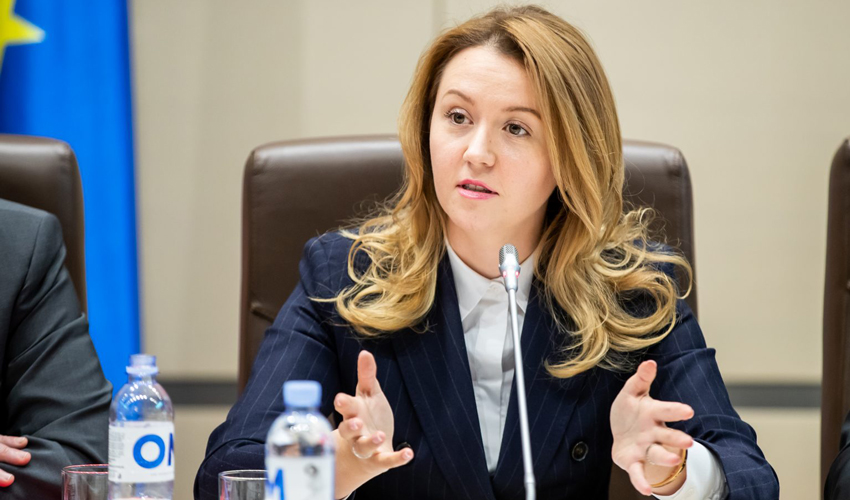
Dmitri Tereburke
Dimitri Tărăburcă, an expert in the field of evaluation, expressed his vision. He believes that evaluation in Moldova is in a deep systemic crisis.
“The situation became more complicated after the Moldovan valuation market was formally reoriented to the International Standards. In practice, it resulted in borrowing the Romanian model without adaptation to the national legal and economic environment, without training of specialists, without methodological and institutional support”, – said Dimitri Tărăburcă.
“Each country has its own specifics of the legal environment. ANEVAR (National Association of Authorized Valuers of Romania) did not just translate international standards into Romanian, it adapted them to its conditions, its legislation,” he explained for Logos Press. – In Romania, the European pressure on the regulatory environment is broader than in our country. That is, they do not change the laws there “for someone”. We are talking about the international system, about European values, and the law on appraisal activity in our country is a typical Soviet attribute associated with monopolistic regulation by the public sector. We need to change the law on appraisal activities in order to work according to international standards. We need to bring regulation in line with the requirements of international standards. There should be at least one regulator, not three as it is now (real estate, securities, intellectual property are regulated by different agencies, and the Ministry of Justice is indirectly involved in valuation)”.
According to Tărăburcă, the market was unprepared to work under the new requirements: most appraisers have no practical experience in applying IFRS, EVS or IVS standards (International and European Standards). The weak level of training and lack of mandatory professional accreditation caused low quality of valuations, numerous methodological errors, legally unstable reports, which often cannot be used in financial and judicial turnover.
Regulatory oversight is weakened. The Agency of Geodesy, Cartography and Cadastre (AGCC), having monopoly control over the industry for more than 20 years, not only failed to ensure the development of the professional environment, but also blocked the implementation of national standards. Attempts by the professional community to initiate reform in 2019 were stopped by the same Agency.
A closed system of admission to the profession was formed. Individual managers, including the longtime head of the evaluation department, carried out manual allocation of market access. This formed a persistent practice of double standards and conflicts of interest. The same object could be valued according to different methodologies depending on the customer’s objectives. The result was the absence of a single value as required by international practice.
This resulted in distortion of the tax base, inefficient privatization and budget losses. There are known cases of significant underestimation of the value of state property when selling it, including by relying on outdated approaches and methodologies.
He believes that the situation is no better in the financial sector. Banks demand reliable, market-based reports, especially with regard to the valuation of collateral. However, in the absence of up-to-date market data, analytical databases and proper qualifications, specialists cannot provide risk-appropriate reports. This creates a strain on the profession itself, undermines trust and increases operational and legal risks for lenders.
An additional burden is created by methodological documents that set formal requirements but often contradict the logic of the assessment. For example, in a number of cases it is suggested to apply the cost approach where it distorts the utility of the object, especially in markets with low activity.
According to the specialist, the conflict is rooted in the immaturity of the market, lack of qualified personnel, lack of infrastructure and legal opacity. The existing model does not allow to ensure uniform principles, compliance with standards and objectivity of reports.
International Valuation Standards (IVS) are more about business, financial system, accounting and reporting. And our emphasis is on real estate, which is wrong, he believes. European and international standards are amended every two years. In the latest version, for example, the philosophy has changed, the key transition is that any object should be valued based on its production and economic activity.
“The collateral mass in general, according to our calculations, is 6-7 billion euros. And appraisers instead of a balanced analysis, identification of collateral from the position of market dynamics and value offer methodology! It is not only bankers who are uneasy. An incorrectly valued amount of this kind of money can lead to a systemic crisis,” continues Dimitri Tărăburcă. – I am also worried, because unlike the pledge holders, I interpret the inaccurate value as a systemic danger in the form of a rope around the neck of a real Moldovan asset, and the Europeans have the end of the rope”.
Appraisers and bankers can agree. But that agreement can’t last. The bank is not against standards, the bank is against useless reports and risks. To get out of this situation requires not a partial but a structural revision of regulation: dismantling the governance model formed by the AGCC, transferring powers to independent professional associations, introducing liability mechanisms and urgently adopting IVS-based regulations, he suggests. Without these steps, the situation will only worsen. It is necessary to form a regulatory environment and equalize the qualifications of appraisers. Because of the existing mass of appraisers, only 20% are able to really work. Banks and investors do not object to appraisal as a tool. But in its current form it does not fulfill the task of being a reliable mechanism for measuring value.
Last week a meeting of representatives of banks, public organizations of appraisers and the Agency of Geodesy, Cartography and Cadastre took place. According to the chairman of the National Society of Professional Appraisers of Moldova (SNEP) Veaceslav Revetschi, the most debated issue was the application of Article 46 of the Valuation Guide, which refers to the application of the comparative method. Many appraisers understood it in such a way that when adjusting the value, the weighted average cannot be derived on the basis of three to five analogues. And the market value should be determined on the basis of one analog closest to the assessed object. As a result, the Agency issued an official response that the application of weighted average is allowed at the discretion of the appraiser.
It was agreed that methodological and editorial issues would be solved in the working order. The Agency promised that when a sufficient number of fundamental and necessary changes are accumulated, the Valuation Guide will be adjusted in six months.
It should be noted that when asked by Logos Press to express its position on the current situation, the AGCC promised to respond “in the near future”.

Comment of the Agency of Geodesy, Cartography and Cadastre
When this issue was being put together, Logos Press received an urgent reply from the Agency’s specialists.
We realize that the transition to international valuation standards requires considerable effort to adapt to a more complex regulatory framework, and some provisions may be difficult to interpret, especially in the absence of established practice.
Regarding the possibility of developing our own national standards, we would like to clarify that according to Article 6, paragraph (2) and Article 18 of Law No. 989/2002 on valuation activities, this task is entrusted to the central administrative authority in the field of cadastre of immovable property in cooperation with non-profit organizations of valuers. Although there have been discussions about this possibility in the past, the decision to adopt the International Valuation Standards (IVS) developed by the International Valuation Standards Board, in official translation by the National Association of Authorized Valuers of Romania (ANEVAR), proved to be the most efficient solution in terms of feasibility and compliance with international trends.
Developing its own set of standards would have required considerable time and resources, with the risk of creating a normative framework isolated from generally recognized global practices, which would have negatively affected both the quality of the evaluation process and the degree of compatibility with international requirements.
The Agency of Geodesy, Cartography and Cadastre (AGCC) became a member of the International Valuation Standards Council (IVSC) in accordance with Government Resolution No. 494/2022, thereby making a firm commitment to harmonize the national regulatory framework with the international one. The license agreement concluded by the IVSC on November 1, 2024, granted ANEVAR the exclusive right to translate into Romanian, and AGCC was granted the right to publish and reproduce the translated version.
Note that the law does not require that the organizations involved in the process of developing or promoting standards be exclusively national, which allows the use of relevant international experience.
In order to support the process of implementation of the standards, AGCC envisaged a phased entry into force of the standards by approving the document by the Order of the General Director No. 21 dated February 27, 2025.
The professional training event was held on June 17-18 this year in partnership with ANEVAR and with the support of the Property Registration and Valuation Project. The event brought together more than 120 appraisers and professionals and included presentations by ANEVAR management who provided practical explanations on the structure and interpretation of the standards. We emphasize that according to Article 19, paragraph b) of Law no. 989/2002, the organization of professional development activities is equally entrusted to professional associations, which are obliged to actively contribute to the continuous development of their members’ competences.
In parallel, in order to respond to some ambiguities noted by the professional community, the Agency initiated specific actions to clarify them. Thus, on July 31, 2025, a working meeting was held with the participation of about 40 representatives of appraisers’ associations, banking and private sectors, during which a controversial provision from the Appraisal Manual was discussed. Subsequently, as a result of this consultation, an explanatory note was issued to real estate appraisers and interested institutions.













